US is 'locked and loaded' if Syria uses chemical weapons again: Nikki Haley
The U.S. declared airstrikes had "crippled" Syria's chemical weapons program.
The U.S. announced that overnight airstrikes succeeded in dealing a severe blow against the Syrian government's capacity to use chemical weapons.
But U.N. Ambassador Nikki Haley also warned Saturday that the U.S. is "locked and loaded" in case Syrian President Bashar al-Assad uses chemical weapons again.
"Last night, we successfully hit the heart of Syria’s chemical weapons enterprise, and because of these actions, we are confident that we have crippled Syria’s chemical weapons program," Haley said at an emergency meeting of the U.N. Security Council. "I spoke to the president this morning and he said that if the Syrian regime uses this poisonous gas again, the United States is locked and loaded."
She added, "When our president draws a red line, our president enforces the red line."
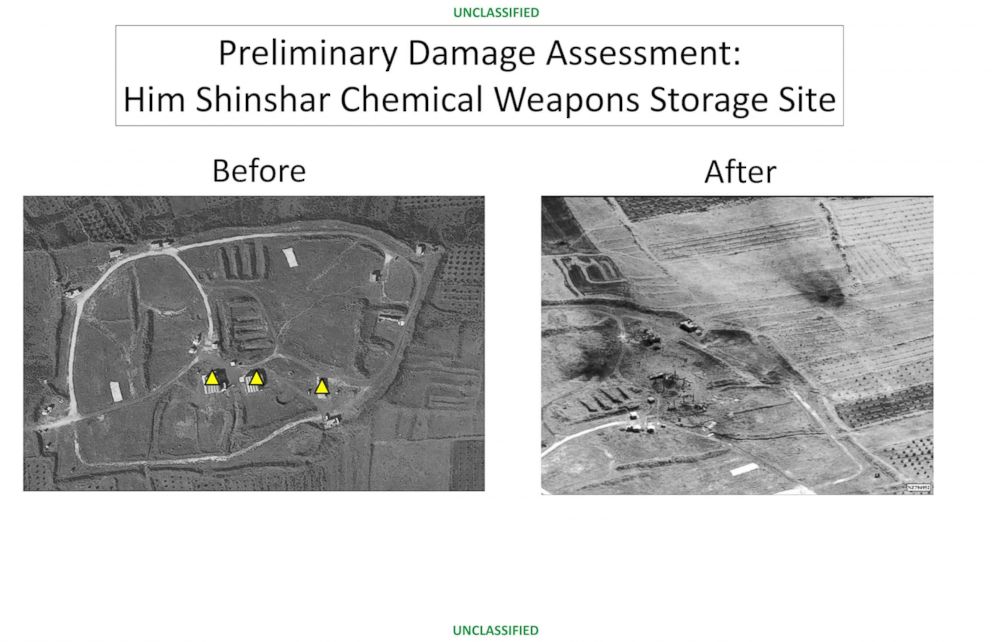
The Security Council meanwhile rejected a Russian resolution calling for condemnation of the "aggression" by the U.S. and its allies against Syria. Only two other countries, China and Bolivia, joined Russia in supporting the resolution. Eight countries voted against it, and three abstained. A resolution needs at least nine "yes" votes to pass.
Anatoly Antonov, Russia's ambassador to the United States, tweeted that the strike would have repercussions. "We warned that such actions will not be left without consequences."
President Trump, like other administration officials, declared victory with the airstrikes launched in collaboration with the U.K. and France. "Mission Accomplished," he tweeted.
Over 100 missiles launched
In the predawn strike, 105 missiles were used to obliterate three key chemical weapons facilities, officials said Saturday morning.
Video shows the Syrian Scientific Research Center in Barzeh reduced to rubble. Two targets near Homs, Syria, including a chemical weapons storage facility, were also taken out in what Pentagon officials said was a "powerful show of allied unity."
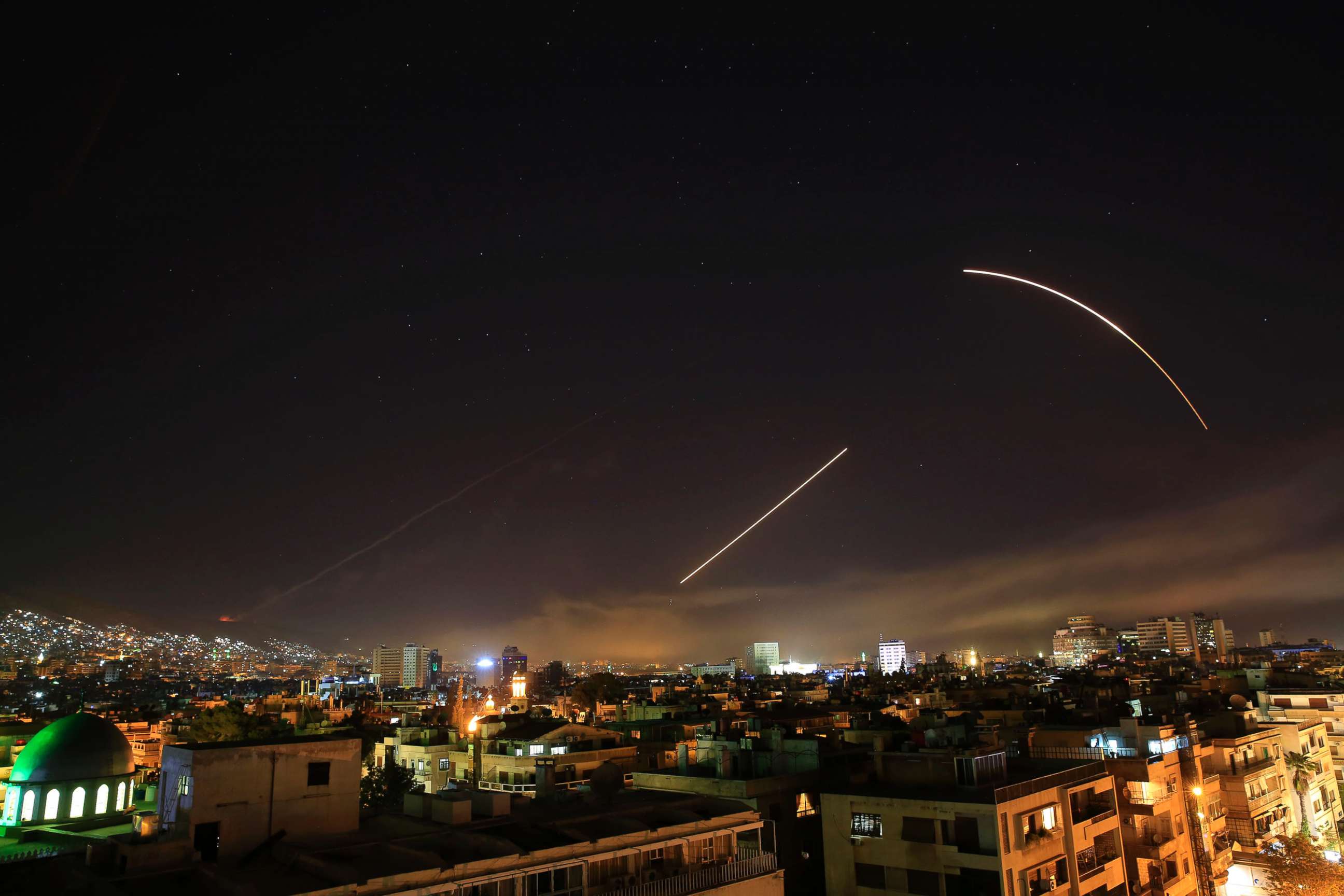
Despite threats from Russia, an Assad ally, to intercept missiles targeting Syria, there was no evidence that Russia deployed its air-defense systems in response to the missiles.
The assault by the U.S., Britain and France was "able to overwhelm the Syrian air defense system," Lt. Gen. Kenneth McKenzie Jr., director of the Joint Staff at the Pentagon, said Saturday. "None of our aircraft or missiles involved in this operation were successfully engaged by the Syrian air defenses. And we have no indication that Russian air defense systems were deployed."

The missile strikes were prompted by an alleged chemical weapons attack on Syrian civilians April 7 by Assad forces in a Damascus suburb, an atrocity U.S. officials said Syria has committed in the past.
"Americans are united" in condemning Syria's "inexcusable use of chemical weapons," Dana White, chief Pentagon spokesperson, said at a briefing Saturday morning. The airstrikes against Syria were "carefully orchestrated and methodically planned to minimize potential collateral damage."
Russia responds
Vassily Nebenzia, Russia's U.N. ambassador, denied that a chemical attack occurred last weekend, saying it was staged.
"There were people found who took part in this staging and, in fact, the inspirers and organizers of that staging were foreign intelligence services," Nebenzia said at the U.N.
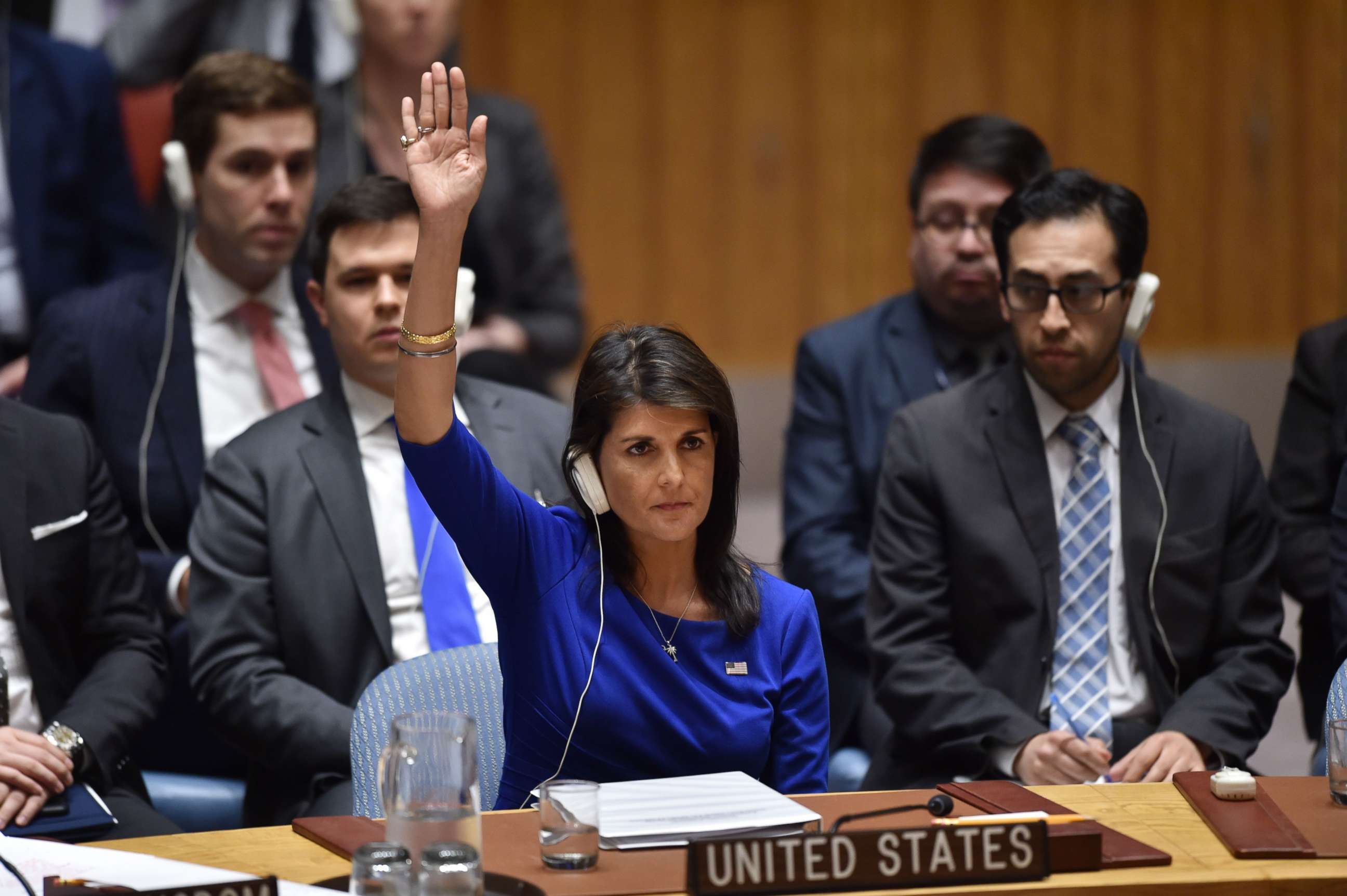
The White House in a statement Saturday afternoon rejected any notion of the chemical attack being faked.
"Such a widespread fabrication would require a highly organized and compartmented campaign to deceive multiple media outlets while evading our detection," the White House statement said. A significant body of information points to the regime using chlorine in its bombardment of [Douma], while some additional information points to the regime also using the nerve agent sarin."
Damage assessment
McKenzie said the missile strike was twice the size of one the U.S. launched on Syria a year ago, in April 2017. He said the three targets hit were "fundamental components of the regime's chemical warfare infrastructure."
"This strike aimed to deliver a clear and unambiguous message to the Syrian regime that their use of chemical weapons against innocent civilians is inexcusable and to deter any future use of chemical weapons," McKenzie said, adding that while a more detailed damage assessment was being conducted, initial reports showed all three targets were taken out.
"Initial indication is that we accomplished our military objectives without material interference from Syria," McKenzie said. "I'd use three words to describe this operation: Precise, overwhelming and effective."
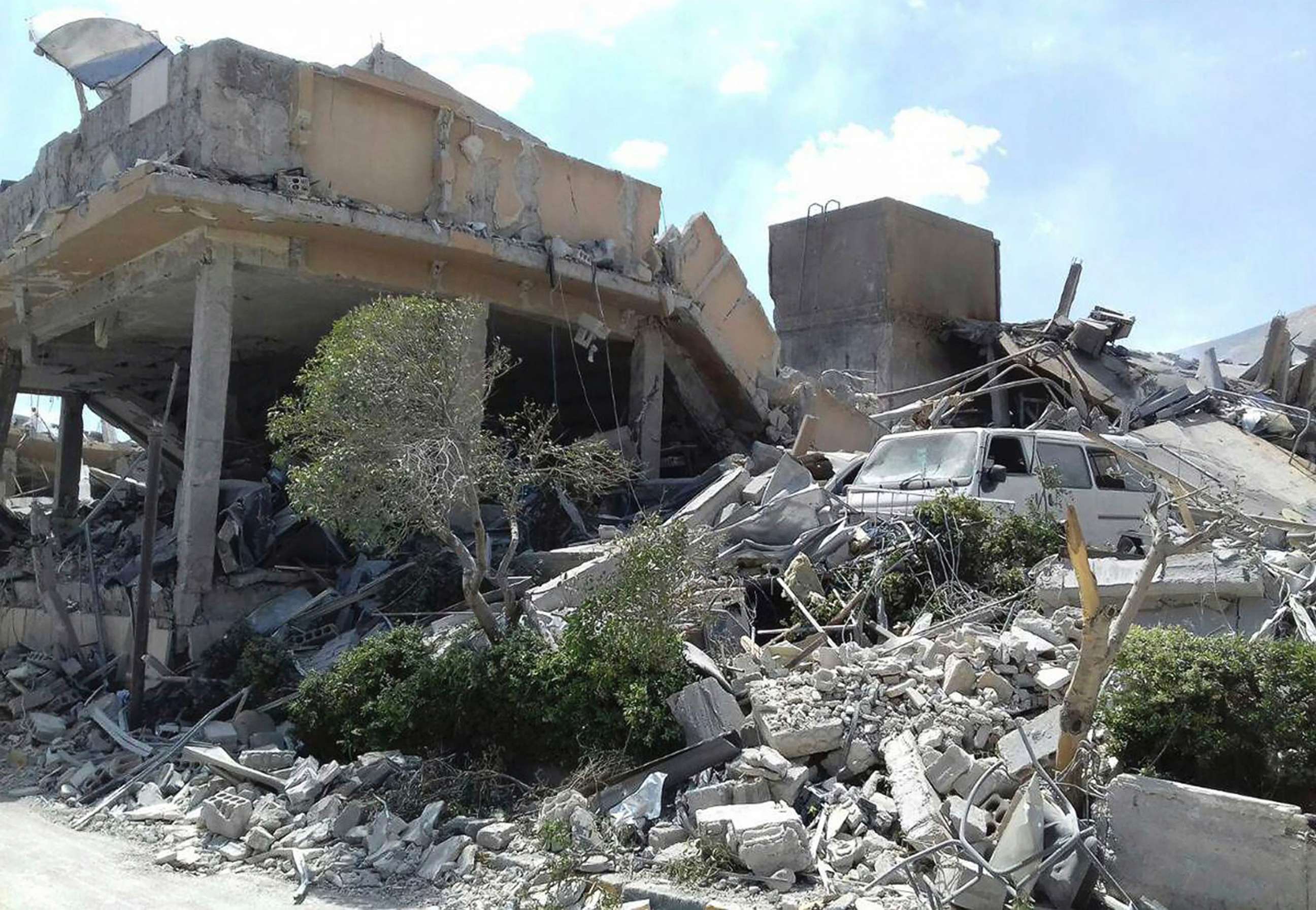
He said the first target hit was the Barzeh research facility and that the United States deployed 76 missiles, including 57 Tomahawk cruise missiles.
Showing graphics of the leveled and smoldering facility, he said, "This target was destroyed."
"It's going to set Syrian chemical weapons program back for years," McKenzie said.
The second target, the chemical weapons storage facility near Homs, was destroyed by 22 weapons including British and French missiles.
"This target was attacked by all coalition forces," McKenzie said.
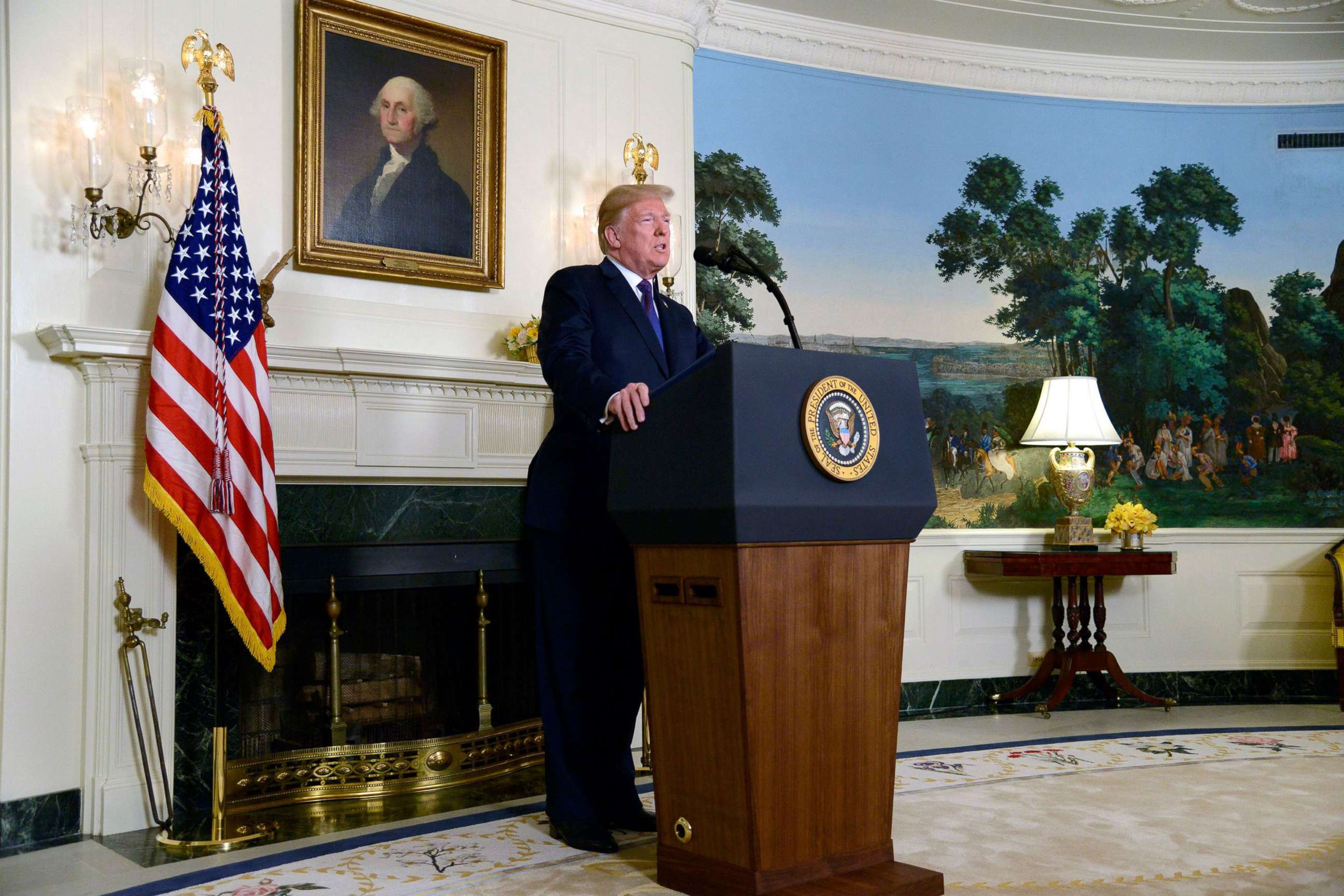
Seven missiles were targeted at the weapons bunker, a little over four miles from the Homs storage facility, McKenzie said.
"Again, the initial assessment was that this bunker was successfully hit," McKenzie said.
Missiles fired from air and sea
He said all 105 missiles used in the strike were fired from U.S., British and French ships and aircraft positioned in the Red Sea, the northern Gulf and the eastern Mediterranean.
The USS Monterey and the USS Laboon, both in the Red Sea, fired a total of 37 Tomahawk cruise missiles, McKenzie said. He said the USS Higgins in the northern Gulf fired 23 Tomahawks. From the eastern Mediterranean, the French frigate Languedoc launched three missiles, and the USS John Warner Navy submarine fired six Tomahawks, McKenzie said.
From the air, two U.S. B-1 Lancer bombers fired 19 missiles, while British Tornado and Typhoon aircraft bombers launched eight Storm Shadow missiles, he said. French Rafale and Mirage fighter jets launched nine missiles, according to McKenzie.
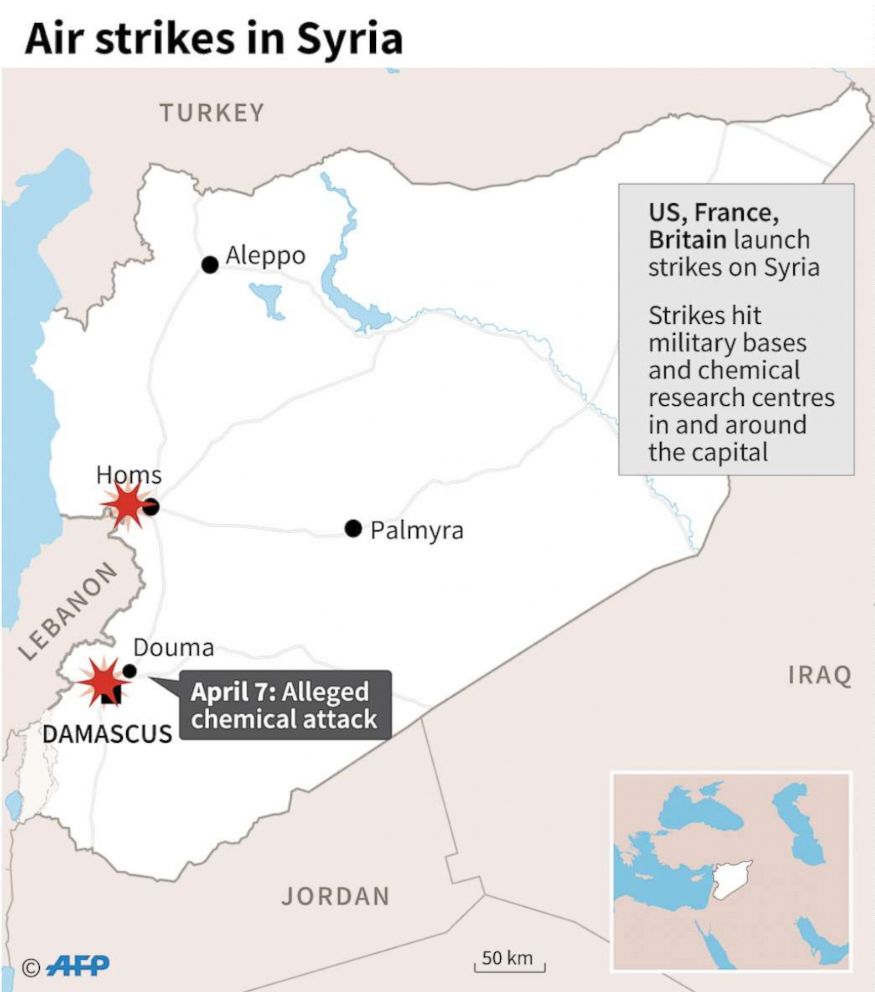
He said there were no initial reports of civilian casualties and that all U.S. and allied aircraft safely returned to their bases.
Mckenzie said that over 40 surface-to-air missiles were launched by the Syrian regime, most after the "last impact of our strike was over."
He said it is likely the Syrian missiles were fired "without guidance."
"We assess that the defensive efforts of Syria were largely ineffective and clearly increased the risk to their own people based on this indiscriminate response," McKenzie said. "When you shoot iron in the air without guidance, it's gonna come down somewhere.
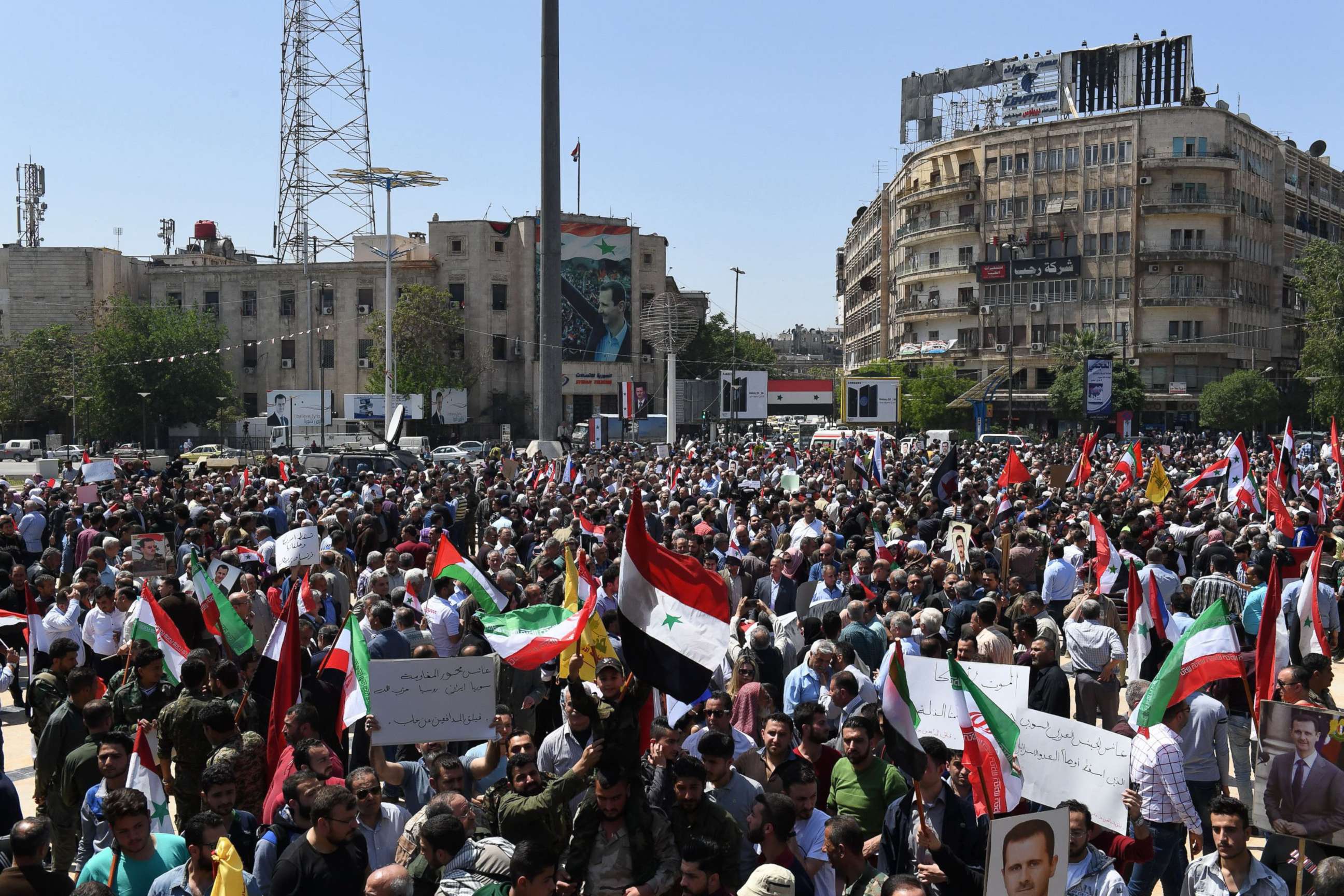
"By contrast, the precise nature of our strike, and the care of which our allied team planned and executed, significantly reduced the risk of collateral damage to civilians," McKenzie said. "We have not seen any military response from actors within Syria" since the airstrikes.
No change in U.S. policy
White said the United States and its allies "do not seek conflict in Syria."
"This operation does not represent a change in U.S. policy, nor an attempt to depose the Syrian regime," White said during the briefing. "These strikes were a justified, legitimate and proportionate response to the Syrian regime's continued use of chemical weapons on its own people."
NATO Secretary-General Jen Stoltenberg said all 29 NATO members supported the airstrikes in Syria.
"This will reduce the regime's ability to further attack the people of Syria with chemical weapons," Stoltenberg said.
Meanwhile, Iran, another ally of Syria, joined Russia in denouncing the airstrikes.
"Last night's strike that happened at dawn against Syria is a crime," Iran's Supreme Leader, Ayatollah Ali Khamenei, said in a statement. "I clearly announce that the U.S. President, the French President and the British Prime Minister are criminals and have committed a crime."
The Associated Press contributed to this report.




